THE TOPIC
The Single Legged Deadlift has become a relatively common exercise. It is especially good and is often used for those with knee trouble, especially conditions like IT Band syndrome, also known as runner’s knee. I’d like to highlight three very common mistakes that reduce the effectiveness of the exercise.
WHAT YOU CAN DO
This is what a Single Legged Deadlift should look like. We are looking for a straight line between the ear, shoulder, hip, knee, and ankle with a flat back and neutral neck alignment.
The challenge of the exercise is in maintaining this alignment while performing the movement. Do not get sidetracked by the load or reps. The point of the exercise is to work on stabilization, especially from the muscles of the hip, but also from the back and core. If your form deviates from this pattern, much of the effectiveness is lost.
THREE COMMON MISTAKES
1. Opening The Hip
It is very common to see this done with an open hip. I’ve exaggerated it in this picture for clarity, but it usually is being allowed to some degree.
This mistake takes the training effect off of the target muscles. In this position I have shifted my center of gravity over the standing leg, making it much easier for the stabilizers in my core and hip to keep me upright. What I want to do is challenge those muscles so that they will be stronger, not make it easier for them.
2. The Leg Cross-Over
This is along the same lines as allowing the hip to open up. By swinging the back leg behind the standing leg weight is shifted into a position that assists you in the movement. Again, the point of this exercise is to challenge the stabilizers to do the work themselves and therefore become stronger. Do not let that back leg serve as a balancing instrument.
It should look like this, with the foot pointing straight out to the back.
3. The Head Lift
This is one of the most common mistakes in both the Single Legged Deadlift and the regular Deadlift. The head should not tilt upward allowing your eyes to look forward. This places extra stress on the cervical spine. If you are attempting to see something in the mirror, keep the chin tucked and look only with your eyes. This is especially important when you begin to lift heavier loads.
THE REASON
Ultimately, the point of the Single Legged Deadlift is to train the hip and knee stabilizers on the standing leg, particularly gluteus medius. This large stabilizing muscle helps to keep the knee from falling inward by pulling the femur outwards. This helps to take pressure off of the knee and the IT Band, which is why it can be very helpful in relieving IT Band syndrome. Allowing compensation patterns reduces the challenge to that muscle, defeating the purpose of the exercise.
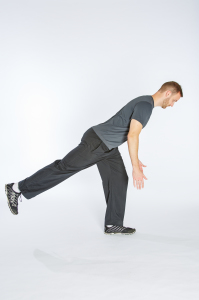
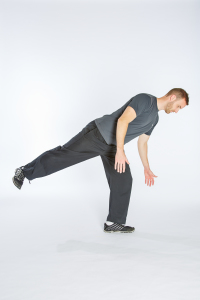
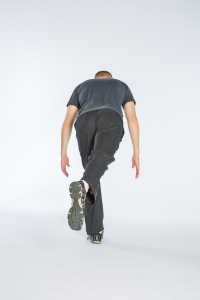
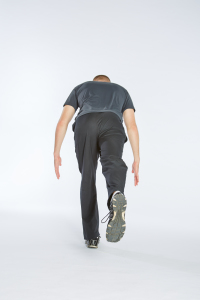
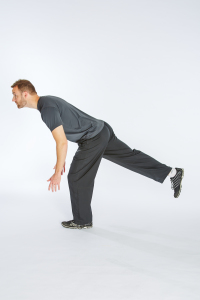
Pingback: Deep Squat + Collapsing Ankles = Poor Squat - do the movement May 14, 2015
[…] leg). You will need to add strength, especially laterally. Try some band walks, bridges, and even sinlge legged deadlifts to help activate and strengthen the […]